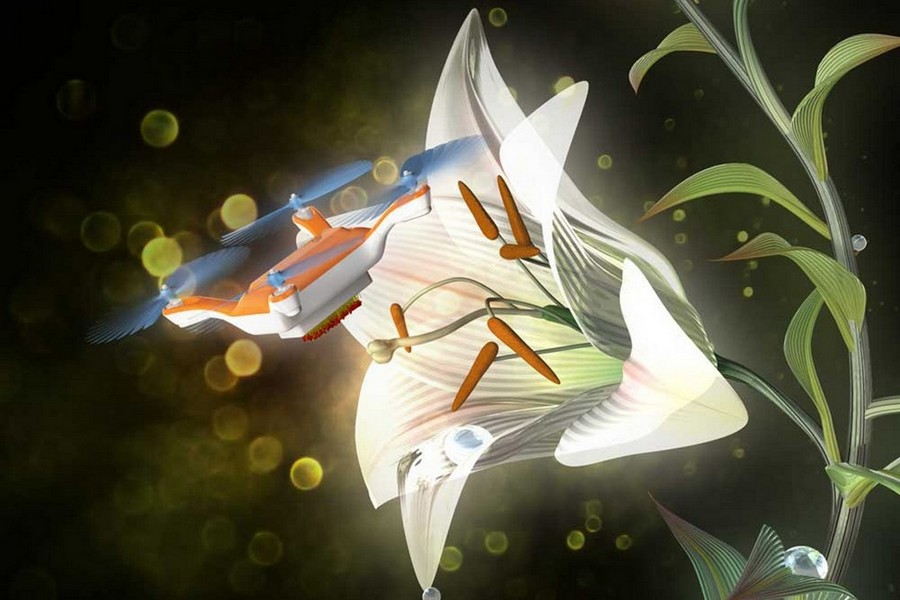Bees started to die out. Their numbers are dropping on a massive scale for years, mostly due to the aggressive use of pesticides all over the world. And while this might seem not so important, if bees disappear, we are all going to die. They are the only natural way for ninety percent of flowering plants to reproduce, and if they extinct we better find a replacement, or we are doomed.

Fortunately, a group of researchers at the National Institute of Advanced Industrial Science and Technology in Japan are on the right track of constructing a replacement for bees. Instead of bees, they use bee-sized drones to pollinate plants. Drones are equipped with horsehairs on their back, coated with a special gel, enabling them to pick up pollen and spread it to other plants.
The research is still in early stage, without being tested outside of the laboratory. Years will pass before the tiny drones become ready to go outside and start doing bee’s work. Drones are not autonomous at moment, but the goal is to make the entire pollinating system autonomous.
The task researchers placed upon themselves is a hard one to accomplish. The first idea was to construct a spray machine, but since the machine practically launches pollen at high speed, plants, as well as pollen grains, would end severely damaged.
Check Also: How to Fix Cannot Connect to App Store
Eijiro Miyako, a senior author of the research, said that the construction of the pollen-gathering drones is a “very tough work,” since they have to make a drone small enough to pick up pollen grains, but at the same time able to run on their own power source.

The gel was developed in order to be sticky enough for the grains to stick, but not too sticky in order for the pollen grains to rub off on the next flower. The first experiments yielded positive results; the small, 15-gram and 4-centimeter-wide drones managed to cross-pollinate Japanese lilies, without damaging pistils or stamens of the flowers.
The next step is upgrading the tech so it can be used on fields. For that, the drones would likely need to be equipped with a GPS, high-res cameras, and an AI system able to coordinate the army of pollinating drones. Drones are to work alongside bees, according to Miyako and shouldn’t be used as a sole pollinating solution.
Check Also: Best Torrenting Sites
For now, the tech is still years from being usable in real-world conditions, but the Japanese researchers believe they will make it a reality, helping bees in their precious work.
